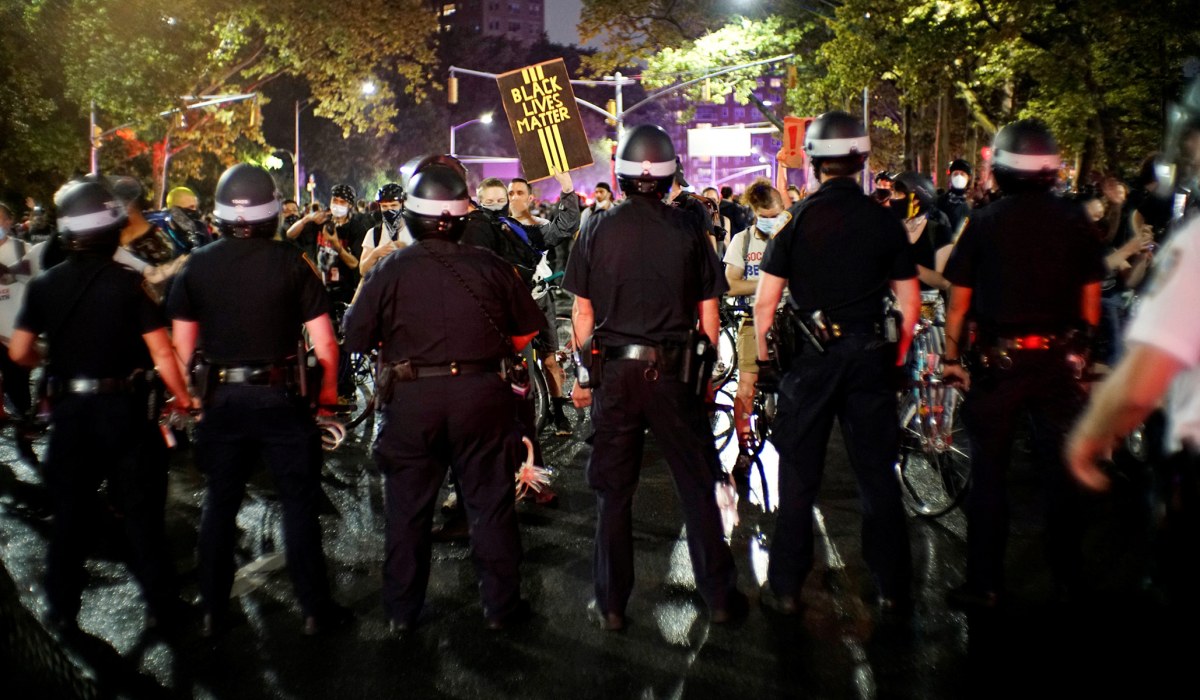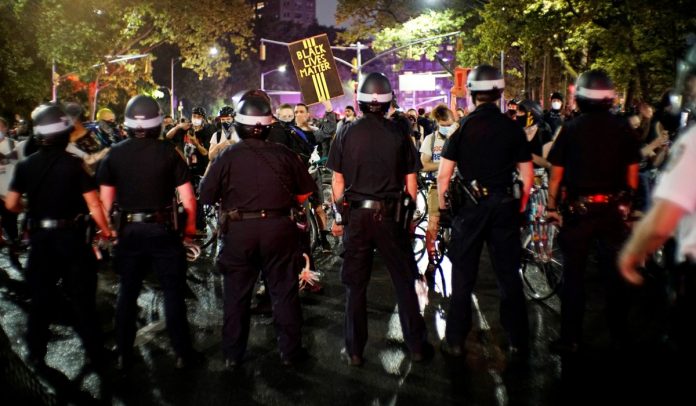
NRPLUS MEMBER ARTICLE S oon after the 2014 police-shooting death of Michael Brown Jr., in Ferguson, Mo., regarded as racially motivated by many, the U.S. Department of Justice sponsored a two-day training in implicit bias for police in the St. Louis area. The short-term goal of the training was sold as helping officers become aware of their unconscious racial prejudices. This training would, presumably, curtail discriminatory use of force and, ultimately improve public trust in the police.
The federal government and private foundations have since disbursed millions of dollars to train local police departments. And after the killing of George Floyd in Minneapolis, the mayors of Los Angeles, Milwaukee, and Tampa signaled their intention to install or expand implicit-bias training. The states of Michigan and Texas have passed bills requiring it.
Congress, too, tried to act. The Police Reform Bill, unveiled by the Democratic House in June, contained a mandate for implicit-bias training at the federal level and conditioned federal funding on establishing training at the state and local levels. The Republican Senate bill, however, included no implicit-bias training.
For now, police reform has stalled. But when lawmakers return to it — as they almost surely will — implicit-bias training should have no place in the final legislation. The reason is simple: There is no evidence that implicit-bias training makes a difference in the behavior of police.
This is not to challenge the basic concept. Most of our preferences and prejudices probably lie outside of our awareness, or at least are very rapidly activated as we appraise new people and situations. This is why the detection of hidden attitudes, using a probe called the Implicit Association Test (IAT), strikes many as so compelling: It supposedly identifies a person’s prejudices no matter how sincerely she disavows it.
Indeed, the IAT, developed by psychologists in 1998, has become one of the most famous psychological instruments to emerge since the iconic Rorschach inkblot test. And as with the Rorschach, its scientific foundations are at best controversial and, in the eyes of many psychological researchers, weak.
The IAT is a clever reaction-time test that evaluates how strongly a person associates certain concepts. Participants use a computer to automatically link words with images; response times are measured in thousandths of a second. In the race version of the IAT (there are also versions for gender, age, disability, obesity, suicide, and so on), the faster a subject pairs a picture of a white face with a positive word, such as “good” as opposed to “bad” — and, conversely, “black” with “good” as opposed to “bad” — the closer those concepts reside in the person’s mind. The amount of time it takes to make the pairing reveals the strength of unconscious mental associations.
Thus, someone who is quicker to link the black face with a negative word than she is to link the white face to that word has a “preference” for whites and thereby is deemed implicitly biased. Notably, a majority of test-takers — including about half of blacks, according to some accounts — are faster at linking white faces with positive descriptors.
There are significant drawbacks to the race IAT, however. First, the scores have what psychologists term “low test-retest reliability”: A person could obtain a high bias score one day and a low score the next. Surely one would expect submerged prejudice to be a relatively stable trait.
Second, the meaning of an IAT anti-black bias score is hard to interpret. For example, a faster association may merely reflect awareness of common cultural stereotypes, a respondent’s fear of appearing racist, or even sympathy regarding minority individuals’ unjust plight.
Speed of association can also reflect the real world: Police officers, for example, who work in a high-crime neighborhood that is predominantly African-American may develop an automatic association of African Americans with crime and guns, simply reflecting their experience of ongoing events.
Moreover, the race IAT is poor at predicting discriminatory behavior, at least in the laboratory. For example, the measure doesn’t relate much or at all to a propensity to share money with a black participant, a willingness to direct budget cuts to minority student organizations, or the extent to which one is friendly to a black experimenter.
Last year, a major mathematical synthesis of the literature examined 492 race-IAT studies (including 87,418 participants) and found that test scores weakly measure the propensity to discriminate — a finding consistent with other meta-analyses. “It is difficult to find a psychological construct that is so popular yet so misunderstood and lacking in theoretical and practical payoff,” concluded psychologists Gregory Mitchell and Philip Tetlock in an overview.
A real-world look at Minneapolis offers a discouraging picture. In the years following the city’s 2014 implementation of implicit-bias training, police force (kicking, punching, neck holds, and use of Tasers) increased. In 60 percent of these incidents, the subject was black. It would be premature, of course, to conclude that implicit-bias training led to an increase in brutal force. More likely, it was inert or, at best, yielded small benefits that were insufficient to overcome the culture of the police department. (We cannot confirm that the officer who killed Mr. Floyd received implicit-bias training, but he was a member of the force when such training was required.)
If psychology is needed to inform police practice, implicit-bias training is not a promising strategy. Instead, reformers need to capitalize on the long-confirmed truth that the best way to change behavior is by changing the consequences of such behavior, not by trying to change attitudes. In short, make it difficult to be a bad cop.
Many of the federal, state, and local proposals put forth in the wake of the George Floyd incident would introduce more transparency, more enforcement of transgressions, and thus more accountability.
Initiatives have included a national registry of police misconduct, including complaints, disciplinary records, and termination records, thereby making it more difficult for a bad cop to get hired by another police department. Modification of qualified immunity could allow settlement for wrongful-death suits to come out of police pension funds, not taxpayers’ pockets.
Along these lines, many have urged reforming police-union contracts to lower barriers to firing officers with documented histories of bad behavior. The officer who killed Mr. Floyd, for example, was named in at least 17 complaints, with action reportedly taken only once (a reprimand and possibly a suspension), after a 2007 incident.
Workshops with their imported experts hold an understandable appeal for troubled institutions. But in the case of racially based police misconduct, implicit-bias training based on the IAT has no demonstrated track record of success.
This is no surprise. The test — and the training it inspires — is problematic in at least three ways: Its findings are unstable; the same score could indicate either sinister, neutral, or even benign sentiment; and it is not a useful predictor of the commission of racially discrepant harm.
Sally Satel is a resident scholar at the American Enterprise Institute and a visiting professor of psychiatry at the Columbia University Vagelos College of Physicians and Surgeons. Scott O. Lilienfeld is the Samuel Candler Dobbs professor of psychology at Emory University.
The post Questionable Psychological Science Won’t Change Police appeared first on National Review.







